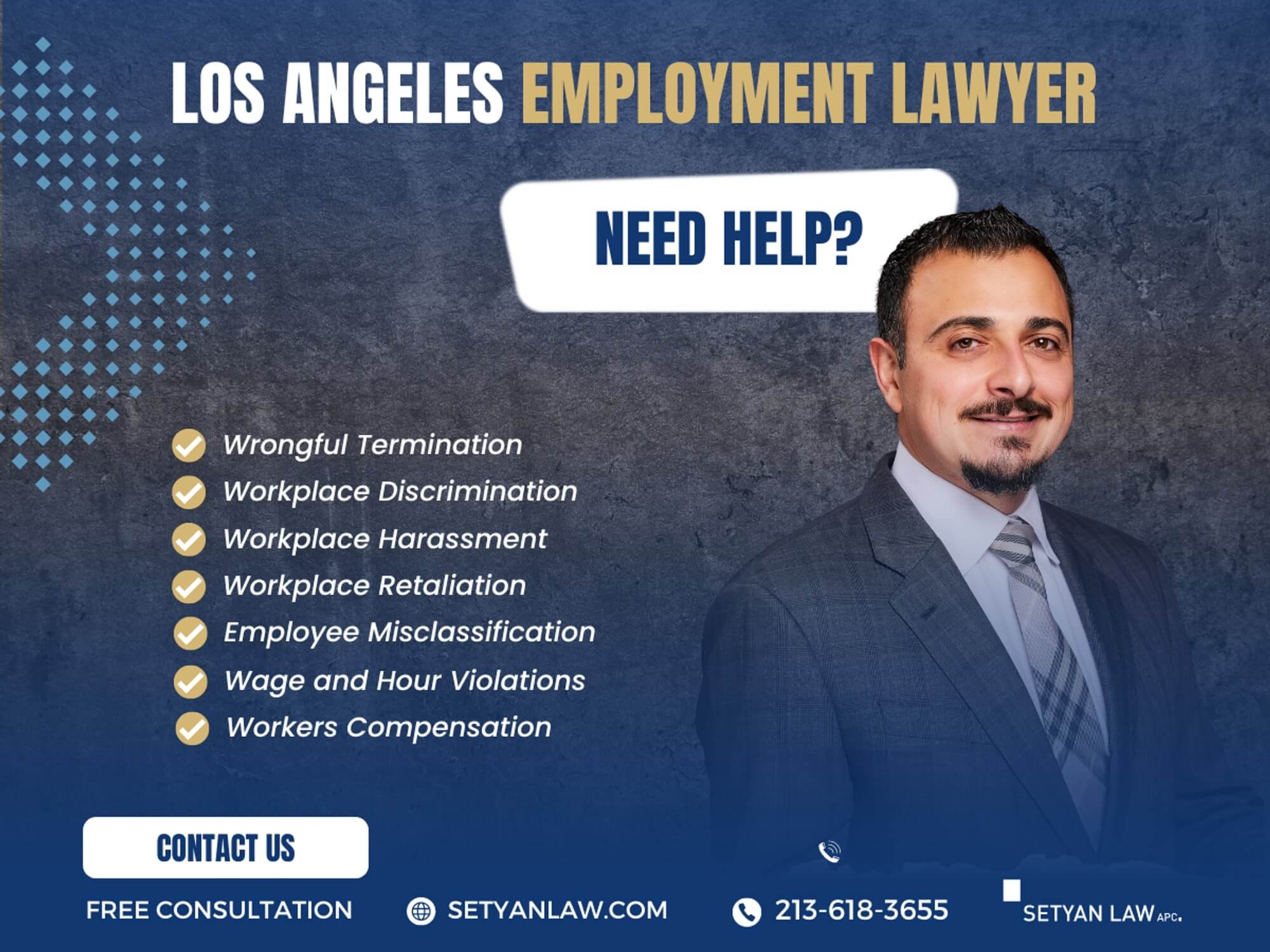Updated June 25, 2025
New California Leave Act Doubles Paid Time for New Parents
California Leave Act has significantly expanded parental benefits, doubling the paid time off available for new parents throughout the state. This groundbreaking change represents one of the most substantial improvements to family leave policy in recent years, offering working parents crucial time to bond with their newborns or newly adopted children without sacrificing financial stability.
Under previous California law, eligible employees could access limited paid family leave benefits that often fell short of meeting families' needs during those critical early months. However, with this major update to the legislation, parents can now benefit from extended time with their children while maintaining job security and continuing their health insurance coverage. Furthermore, the expanded protections ensure that more families across diverse income levels can actually afford to take the leave they're entitled to by law.
This comprehensive guide explains everything you need to know about the updated California Leave Act, including who qualifies, what rights you now have, how to apply for benefits, and what legal protections safeguard your job when you return. Additionally, we'll cover the specific timing of when these new provisions take effect so you can properly plan your family leave.
California Doubles Paid Parental Leave for New Parents
The recent expansion of California's paid parental leave represents a landmark shift in how the state supports working families. Governor Gavin Newsom's signature on crucial legislation has established one of the nation's most comprehensive paid leave programs, ensuring parents can spend vital time with their children without facing severe financial strain.
What the new legislation changes
The newly enacted California leave act introduces substantial improvements to the state's family leave benefits. Previously, eligible employees could receive between 60-70% of their weekly wages while on leave. The updated legislation dramatically increases this benefit rate to 70-90% of regular wages [1]. This represents a historic enhancement that makes taking family leave genuinely accessible for more California families.
For lower-income workers specifically, the changes are even more significant. Employees earning less than $63,000 annually (approximately 70% of the state average weekly wage) will receive up to 90% of their regular wages during their leave period [2]. Meanwhile, those earning above this threshold will still benefit from a considerable 70% wage replacement [1].
Another crucial change comes through Assembly Bill 2123, which eliminates the current requirement for employees to exhaust two weeks of their earned vacation leave before accessing California Paid Family Leave (PFL) benefits [3]. Nevertheless, employers may still allow employees to supplement or "top off" their PFL benefits with vacation leave to receive up to 100% of their normal weekly pay [3].
When the new rules take effect
All these enhanced benefits formally begin on January 1, 2025 [1]. The benefit increase, enacted under Senate Bill 951 (Durazo), applies exclusively to new claims filed on or after this date [1]. Therefore, applications submitted before January 1, 2025, will continue receiving benefits at the 2024 rates of 60-70% of weekly wages [1].
Until the implementation date, the current law permitting employers to require employees to use vacation leave prior to receiving PFL benefits remains effective [3]. Consequently, families planning for leaves in 2025 should consider timing their applications to maximize their benefits under the new structure.
Who the law applies to
The expanded California leave act applies broadly across the workforce. Almost all employees working for private employers, along with some public employees, are covered by these changes [2]. Eligibility requires that workers have paid into the State Disability Insurance (SDI) fund through mandatory payroll contributions [3].
To qualify specifically for Paid Family Leave benefits, employees must be losing income because they need time off to bond with a new child, care for a seriously ill family member, or deal with a family member's military deployment [2]. The program provides eligible employees with up to eight weeks of paid leave annually [4].
For job-protected leave under the California Family Rights Act (which now covers businesses with 5 or more employees), workers must have been employed by their covered employer for at least 12 months and worked a minimum of 1,250 hours during the previous year [5].
Notably, these benefit increases for 2025 are funded by the elimination of the taxable wage limit that became effective on January 1, 2024 [3]. The program is fully funded through worker contributions, with all California employees paying the same percentage of their income into the program [2].
Who Qualifies for the Extended Leave Benefits?
Eligibility requirements form the foundation of California's expanded leave benefits. The latest updates make these benefits accessible to a larger portion of the workforce, although specific qualifying criteria remain in place for different aspects of the program.
Minimum employment duration and hours
To qualify for job-protected leave under the California Family Rights Act (CFRA), employees must satisfy two primary duration requirements. First, they must have worked for their employer for a minimum of 12 months. Second, they must have accumulated at least 1,250 hours of work during the 12-month period immediately preceding their leave [6][7][8]. This approximates about 24 hours weekly over a year.
For Paid Family Leave (PFL) benefits—which provide wage replacement rather than job protection—different criteria apply. Eligible individuals must have:
- Earned at least $300 in the base period (5-18 months before claim start date)
- Made contributions to State Disability Insurance (visible as "CASDI" on paystubs)
- Lost wages due to bonding with a new child, caring for a seriously ill family member, or supporting a family member in military deployment [9][10]
Unlike job-protected leave, PFL eligibility does not depend on length of employment with a current employer or the number of hours worked [11]. Moreover, citizenship status and immigration status do not affect eligibility for these wage replacement benefits.
Employer size and location requirements
A significant change in California law expanded CFRA coverage to smaller businesses. As of January 1, 2021, CFRA applies to employers with five or more employees [6][12][1]. This marks a substantial reduction from the previous threshold of 50 employees, extending job-protected leave rights to millions more California workers.
In contrast, the federal Family and Medical Leave Act (FMLA) continues to apply only to employers with 50 or more employees [8][7]. Additionally, CFRA eliminated the requirement that employees must work at a location where the employer has at least 50 employees within a 75-mile radius [1]. This geographic restriction remains in place under FMLA, which requires employees to work at a location where the employer employs 50 or more people within 75 miles [2].
Both CFRA and FMLA apply to all public employers regardless of size [8][2]. Pregnancy disability leave in California likewise applies to employers with five or more employees, as well as state and local governmental entities [6].
Exclusions under CFRA and FMLA
Despite many similarities, important distinctions exist between CFRA and FMLA coverage. Most notably, CFRA explicitly excludes pregnancy, childbirth, and related medical conditions from its definition of serious health conditions [2][12]. These conditions are instead covered separately under California's Pregnancy Disability Leave Law (PDLL).
Certain religious nonprofit associations and corporations are not considered "employers" under California's pregnancy disability leave law, exempting them from these requirements [6]. This creates potential gaps in coverage for employees of religious organizations.
The 2021 CFRA expansion also eliminated previously existing exceptions for reinstatement rights. Under current law, all employees who take CFRA leave have identical reinstatement rights, regardless of position or salary level [1]. The former exception for an employer's highest-paid employees was removed, strengthening protections for executives and other top-earning staff members.
For employers with 5-19 employees, California offers a small employer mediation program to resolve CFRA leave disputes before employees can proceed with court cases [1]. This mechanism aims to balance expanded worker rights with practical considerations for smaller businesses adjusting to these requirements.
What Rights Do Employees Have Under the Updated Law?
California's expanded parental leave provisions grant eligible employees a robust set of legal protections. These rights ensure workers can take necessary time off without jeopardizing their employment status or benefits.
Job protection and reinstatement
The cornerstone of California leave act protections is guaranteed job security. Eligible employees receive up to 12 weeks of job-protected parental leave within the first year following a child's birth, adoption, or foster care placement. Upon completing their leave, employers must reinstate workers to either the same position or a comparable one with equivalent pay, duties, and location. For instance, a grocery store cashier cannot be demoted to a bagger position or transferred to a location 50 miles away upon return.
Job protection applies equally to all eligible employees. California law has eliminated previous exceptions for highly-compensated employees, ensuring consistent reinstatement rights regardless of position or salary level.
Health insurance continuation
Employers must maintain health insurance coverage for employees throughout their entire leave period. This continuation must be at the same level and under identical conditions as if the employee had continued working without interruption. This requirement ensures parents can focus on bonding with their new child without worrying about potential gaps in medical coverage.
For employees who have employer-provided health coverage, this continuation applies during various types of protected leave, including California Family Rights Act (CFRA) leave and Pregnancy Disability Leave (PDL). Particularly, employees taking combined leave types could receive extended health insurance continuation—up to seven months for those taking both pregnancy disability leave and CFRA baby bonding leave.
Leave flexibility and scheduling
The California leave act offers considerable flexibility in how employees structure their time off. Parents may take their 12-week allotment all at once or intermittently, subject to employer agreement. This flexibility allows families to adapt leave schedules to their specific needs.
Regarding compensation during leave, employers cannot prevent employees from using accrued paid time off, such as vacation days or sick leave. Similarly, employers cannot force employees to use their paid time off during parental leave. This provision gives workers control over their earned benefits.
If both parents work for the same company, each parent may take up to 12 weeks of leave. Hence, the employer cannot limit their combined total to just 12 weeks—a significant benefit for dual-employee households.
How Can Parents Apply for the Extended Leave?
Applying for extended parental leave under the California leave act follows specific procedures that parents must carefully navigate to secure their benefits. Understanding the timing requirements, necessary documentation, and application process is crucial for successfully accessing these enhanced leave protections.
Notice requirements and documentation
Parents must provide their employer with at least 30 days' advance notice when the need for leave is foreseeable, as in cases of expected births, adoptions, or foster placements [13]. For unexpected situations, such as emergency C-sections, employees should notify their employer "as soon as practicable" [13].
Submitting notice in writing is advisable, with employees maintaining copies of their requests for personal records [14]. This documentation becomes particularly valuable if disputes arise regarding leave approval.
Filing for Paid Family Leave (PFL)
To receive wage replacement benefits, eligible parents must file a claim with the California Employment Development Department (EDD). This application cannot be submitted earlier than the first day of leave but must be filed within 41 days of the leave start date to avoid disqualification [15].
Filing through SDI Online typically offers the fastest processing time [3]. Applicants need:
- Valid California driver's license or ID card
- Social Security number
- Current employer information (as stated on W-2 or paystub)
- Last date worked regular duties [15]
Parents must also submit proof of relationship documentation for bonding claims, which may include birth certificates or adoption paperwork [15]. Birthing parents transitioning from pregnancy disability leave receive a streamlined application process, with the form "Claim for Paid Family Leave (PFL) Benefits – New Mother" appearing in their SDI Online inbox once their disability claim ends [15].
Using accrued paid time off
Beginning January 1, 2025, California employers can no longer require employees to use up to two weeks of earned vacation time before receiving PFL benefits [16]. This significant change applies to any disability period starting on or after this date, giving parents greater flexibility in managing their leave benefits [16].
Nevertheless, employees retain the option to voluntarily use accrued paid time off alongside PFL benefits [16]. Many choose this path since vacation time typically provides 100% wage replacement compared to the 70-90% offered through PFL [16]. Employers may still allow employees to supplement their PFL benefits with vacation, sick leave, or other paid time off to achieve full salary continuation [16].
Under CFRA/FMLA protections, employers cannot require the use of sick leave during family leave, although employees and employers may mutually agree to its application [17]. Ultimately, this change creates potential for longer overall absences, as employees can preserve their vacation time while utilizing their full PFL benefits [18].
Can Employers Deny or Retaliate Against Leave Requests?
Federal and state laws strictly prohibit employers from retaliating against employees who exercise their rights under California's expanded parental leave provisions. The legal framework provides robust safeguards to ensure workers can take their entitled leave without fear of negative consequences.
Legal protections against retaliation
Both the California Family Rights Act (CFRA) and the Family Medical Leave Act (FMLA) contain explicit anti-retaliation provisions. These laws make it illegal for employers to discriminate or retaliate against employees for requesting or taking protected leave. Indeed, employers cannot consider an employee's leave as a negative factor in employment decisions, including hiring, promotions, or disciplinary actions. Furthermore, protected leave cannot be counted against employees under "no fault" attendance policies.
What counts as employer violations
Employer actions that may constitute unlawful retaliation include:
- Termination or layoff due to taking leave
- Demotion or failure to promote
- Reduction in pay, hours, or benefits
- Unfavorable schedule changes
- Exclusion from important meetings or projects
- Unwarranted negative performance reviews
- Reassignment to less desirable positions upon return
In fact, any adverse employment action taken because an employee exercised their rights under parental leave laws could be grounds for a legal claim. Employers cannot argue that business needs create an "undue hardship" as justification for denying CFRA or FMLA leave rights.
Steps to take if rights are denied
Whenever employees believe their leave rights have been violated, they should:
Document all communications and interactions related to leave requests, including emails, conversations, and any changes in work conditions.
First attempt to resolve the issue through the company's HR department.
File a complaint with the appropriate government agency. For CFRA violations, contact the California Civil Rights Department (CRD). For FMLA violations, report to the U.S. Department of Labor's Wage and Hour Division.
Consider consulting with an employment attorney, especially in cases involving termination or significant losses.
According to California law, employees have specific timelines for filing complaints—typically within two years for federal claims and three years for state claims.
The Future of Family Support in California
California's expanded leave act undoubtedly represents a watershed moment for working parents throughout the state. Previously, financial constraints often forced parents to choose between bonding with their newborns and maintaining economic stability. Accordingly, these enhanced provisions directly address this dilemma by doubling available paid time while significantly increasing wage replacement rates to 70-90%.
The comprehensive changes benefit families across economic backgrounds. Lower-income workers especially gain substantial support through the 90% wage replacement provision, making parental leave truly accessible rather than just theoretically available. Additionally, the elimination of requirements to exhaust vacation time before accessing benefits provides families greater flexibility in managing their time off.
Job protections constitute another crucial element of this expanded legislation. Workers can now focus on their new family members without constant worry about employment security. Health insurance continuation throughout leave periods further strengthens this safety net for new parents.
The expansion of CFRA coverage to employers with just five employees means millions more California workers now qualify for these critical protections. This change, coupled with the enhanced wage replacement beginning January 1, 2025, positions California as a national leader in family-friendly workplace policies.
Families planning for children should certainly familiarize themselves with application procedures and documentation requirements well before their anticipated leave dates. Though paperwork requirements remain substantial, the benefits far outweigh these administrative steps.
California's expanded parental leave program acknowledges an essential truth: supporting families during critical early bonding periods benefits not just individual households but society overall. The state has taken a definitive step toward recognizing that family formation deserves meaningful support rather than mere lip service. After all, when parents can fully participate in their children's earliest days without financial devastation, everyone ultimately benefits.
References
[1] – https://calcivilrights.ca.gov/wp-content/uploads/sites/32/2023/02/Expanded-Family-And-Medical-Leave_ENG.pdf
[2] – https://www.rigginslaw.com/cfra-vs-fmla-difference-between-cfra-and-fmla/
[3] – https://www.workfamilyca.org/blog/paid-family-leave-what-it-is-who-can-use-it-and-how-to-apply
[4] – https://www.shrm.org/topics-tools/employment-law-compliance/california-extends-paid-family-leave-benefits-to-8-weeks
[5] – https://www.shouselaw.com/ca/labor/leave-laws/new-parent-leave-act/
[6] – https://www.worklawyers.com/maternity-leave-law-california/
[7] – https://www.heidarilawgroup.com/blog/california-paternity-leave/
[8] – https://www.calchamber.com/california-labor-law/fmla-cfra-overview
[9] – https://edd.ca.gov/en/disability/paid-family-leave/
[10] – https://smallbusinessmajority.org/resources/california-s-paid-family-leave-program
[11] – https://www.paychex.com/articles/compliance/california-paid-family-leave
[12] – https://pregnancylawyer.com/california-family-rights-act/
[13] – https://www.nolo.com/legal-encyclopedia/maternity-and-paternity-leave-in-california.html
[14] – https://wilshirelawfirm.com/blog/does-california-have-paid-family-leave/
[15] – https://edd.ca.gov/en/disability/how_to_file_a_pfl_claim_in_sdi_online/
[16] – https://www.vorys.com/publication-california-employers-may-not-require-employees-to-use-vacation-time-before-they-receive-paid-family-leave
[17] – https://calcivilrights.ca.gov/employment/pdl-bonding-guide/
[18] – https://employers.org/2024/11/25/california-employers-lose-option-to-require-vacation-leave-before-pfl/
Call Setyan Law at (213)-618-3655 to schedule a free consultation.






